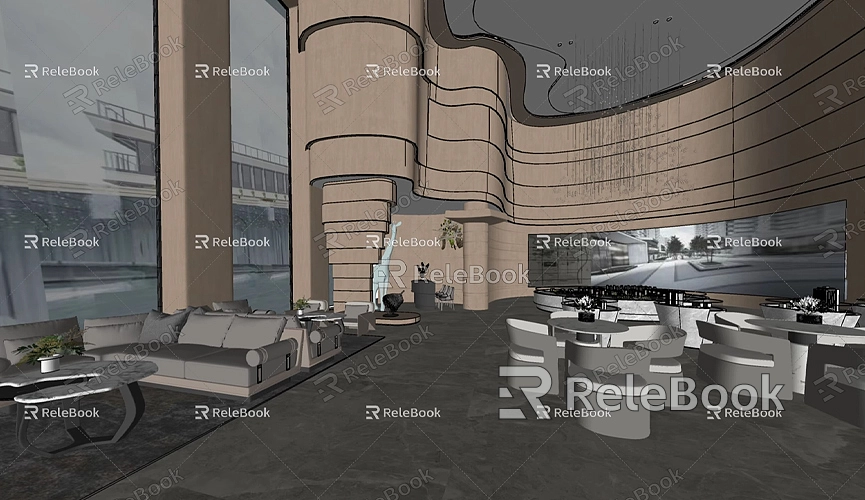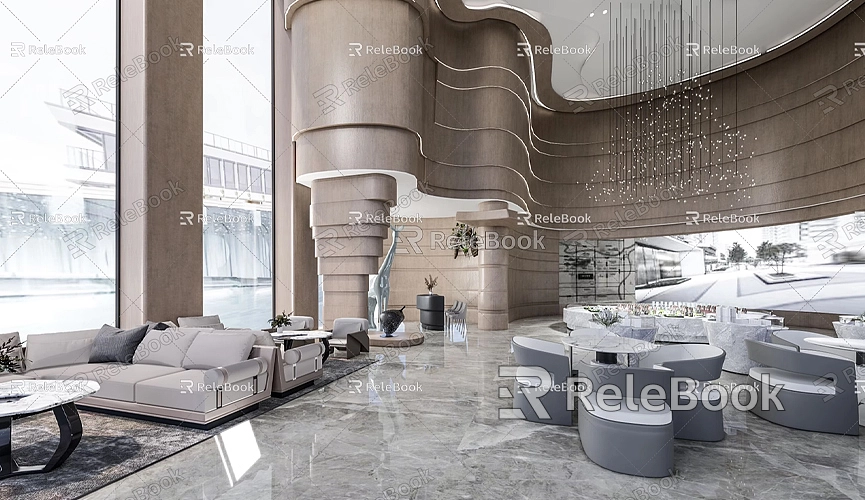How to Create a SketchUp Model from AutoCAD
In architectural design and engineering projects, many designers prefer using AutoCAD for initial drawings because it accurately handles 2D designs and technical drawings. However, as projects progress, there is often a need to convert these 2D drawings into 3D models for better visualization and presentation. This is where SketchUp, a powerful 3D modeling software, comes into play, helping designers transform AutoCAD's 2D floor plans into realistic 3D models. So, how can you create a SketchUp model from AutoCAD? This article will detail the entire process and provide some practical tips.
Preparation
Before starting the conversion, there are some basic preparations that must be made. First, ensure that you have both AutoCAD and SketchUp installed on your computer. Additionally, it’s advisable to prepare your 2D drawings in AutoCAD, ensuring that the drawings are correctly scaled and that all lines and layers are clear. This will save a lot of time in the subsequent modeling process.

Before converting, you should also check some details in the drawings, such as ensuring that all necessary elements are included and that the lines are properly connected. Disconnected lines can cause issues when creating a 3D model in SketchUp, making this step very important.
Exporting from AutoCAD
To import a 2D drawing from AutoCAD into SketchUp, you first need to save it in a compatible file format. AutoCAD defaults to saving in DWG or DXF formats, both of which are recognized by SketchUp.
Open the 2D drawing you wish to convert in AutoCAD, then select “Export” from the “File” menu. It is recommended to save the file as an older version of a DWG file (such as AutoCAD 2013), as sometimes newer versions of DWG files may encounter compatibility issues when importing into SketchUp. Ensure that the exported file has been simplified, containing no unnecessary layers or details, to avoid trouble in the later steps.
Importing AutoCAD Files into SketchUp
In SketchUp, you can directly import the DWG file you just saved. Open SketchUp and select “Import” from the “File” menu. Choose DWG or DXF in the file type options and then select the AutoCAD file you exported earlier.

During the import, you can choose some basic settings, such as scale units and layer handling. Make sure to select the same units as the AutoCAD file to maintain dimensional consistency. Once successfully imported into SketchUp, you will see the 2D drawing displayed directly in the workspace, and you can start converting these flat drawings into a 3D model.
Converting from 2D to 3D
After importing the 2D drawing, you can use various tools in SketchUp to “extrude” these lines and shapes into 3D models. For instance, if you imported a building floor plan, you could first select the lines for the walls and then use the “Push/Pull” tool to extrude them to the appropriate height, quickly creating the basic framework of the building.
Similarly, you can build a complete 3D model by copying, moving, and adjusting elements from the other drawings. If you need to add doors, windows, and other elements, you can use SketchUp’s “Components” feature, making it more convenient for subsequent modifications. Components in SketchUp are not only reusable but also allow you to adjust one component to modify multiple instances simultaneously, greatly increasing efficiency.
Refining the Model
Once the basic 3D model is established, further detailing is necessary. For example, you can add more detailed elements to the model, such as railings, stairs, or other decorative features. SketchUp has many practical tools to help you achieve these effects, such as the “Follow Me” tool for creating curved shapes and the “Sandbox” tool for creating terrain.
During this process, textures and materials for the model are also essential. SketchUp offers a basic material library, but if you want your model to appear more realistic, you may need to import additional high-quality materials and textures. If you require a lot of high-quality 3D textures and HDRI while creating models and virtual scenes, you can download them for free from [Relebook](https://textures.relebook.com). If you need exquisite 3D models, you can download them from [Relebook](https://3dmodels.relebook.com), which provides a wealth of high-quality 3D resources.
Using SketchUp Plugins to Enhance Efficiency
When completing complex 3D modeling tasks in SketchUp, effectively utilizing plugins can significantly enhance efficiency. For instance, some plugins can automatically generate building components, while others can perform automated graphic processing. For floor plans imported from AutoCAD, plugins can help you build walls, windows, and other elements more quickly, making the entire modeling process more efficient.
Common plugins include “Profile Builder” and “1001bit Tools,” which can save you a lot of time during modeling. While some plugins may require additional payment, the investment is well worth it considering the speed improvements in modeling.
Checking and Optimizing the Model
Once the initial structure of the 3D model is complete, the next step is to check and optimize the model. First, ensure that all geometries are correct, with no overlapping lines or unnecessary polygons. SketchUp has a “Purge” function that can help you remove unused elements from the model, reducing the file size and making it lighter.
Optimizing the model not only reduces the file size but also improves SketchUp’s smoothness during operation. If you plan to use the model for rendering or VR presentations, optimization is necessary. Consider simplifying unnecessary details, especially those parts that won’t be seen in the final presentation.
Outputting and Exporting the Model
After completing the 3D model, you may need to export it to other software for further processing, such as rendering or animation production. SketchUp supports various export formats, including 3DS, OBJ, and FBX, which can be used in common 3D software. If your project has specific rendering requirements, such as using V-Ray for rendering, make sure to set up the materials and lighting appropriately before exporting.
Additionally, before exporting, you can layer the model, placing different parts on different layers for easier adjustments when using other software.
The process of converting a model from AutoCAD to SketchUp may seem complex, but once you master the steps and techniques, it can be very smooth. Start with clear AutoCAD drawings, then use SketchUp’s import function to transform these drawings into 3D models. During the modeling process, take advantage of SketchUp’s tools and plugins to improve efficiency, ultimately completing a high-quality 3D model.
Converting 2D drawings into 3D models is not just a technical requirement; it also provides a better way to showcase your design ideas, offering clients more intuitive visualizations and animations. This makes the entire design and communication process more efficient and smooth. If you need high-quality 3D textures and HDRI while creating models and virtual scenes, you can download them for free from [Relebook](https://textures.relebook.com). If you need exquisite 3D models, you can download them from [Relebook](https://3dmodels.relebook.com), which provides a wealth of high-quality 3D resources.
I hope this article helps you better understand how to create SketchUp models from AutoCAD and allows you to apply these techniques more effectively in your daily work. Whether you are a beginner or an experienced designer, continuous practice can enhance your modeling efficiency and skills.

